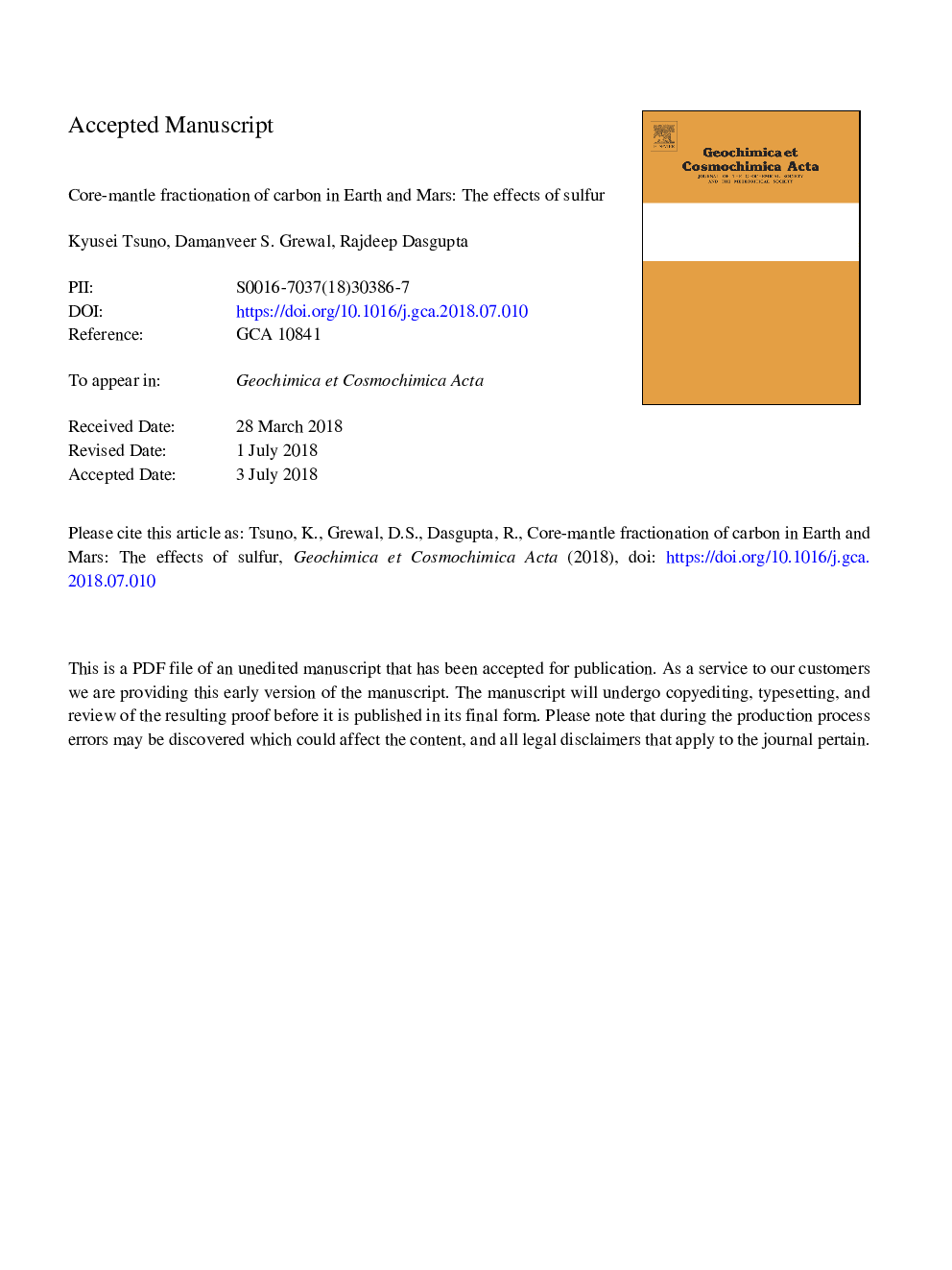| Article ID | Journal | Published Year | Pages | File Type |
|---|---|---|---|---|
| 8910613 | Geochimica et Cosmochimica Acta | 2018 | 57 Pages |
Abstract
Our modelling results confirm previous findings that in order to satisfy the C budget of BSE, the bulk Earth C undergoing alloy-silicate fractionation needs to be as high as those of CI-type carbonaceous chondrite, i.e., not leaving any room for volatility-induced loss of carbon during accretion. For Mars, on the other hand, an average single-stage core formation at relatively oxidized conditions (1.0 log unit below IW buffer) with 10-16â¯wt% S in the core could yield a Martian mantle with a C budget similar to that of Earth's BSE for a bulk C content of â¼0.25-0.9â¯wt%. For the scenario where C was delivered to the proto-Earth by a S-rich differentiated impactor at a later stage, our model calculations predict that bulk C content in the impactor can be as low as â¼0.5â¯wt% for an impactor mass that lies between 9 and 20% of present day Earth's mass. This value is much higher than 0.05-0.1â¯wt% bulk C in the impactor predicted by Li et al. (Li Y., Dasgupta R., Tsuno K., Monteleone B., and Shimizu N. (2016) Carbon and sulfur budget of the silicate Earth explained by accretion of differentiated planetary embryos. Nat. Geosci.9, 781-785) because C-solubility limit of 0.3â¯wt% in a S-rich alloy predicted by their models is significantly lower than the experimentally derived C-solubility of â¼1.6â¯wt% for the relevant S-content in the core of the impactor.
Keywords
Related Topics
Physical Sciences and Engineering
Earth and Planetary Sciences
Geochemistry and Petrology
Authors
Kyusei Tsuno, Damanveer S. Grewal, Rajdeep Dasgupta,
